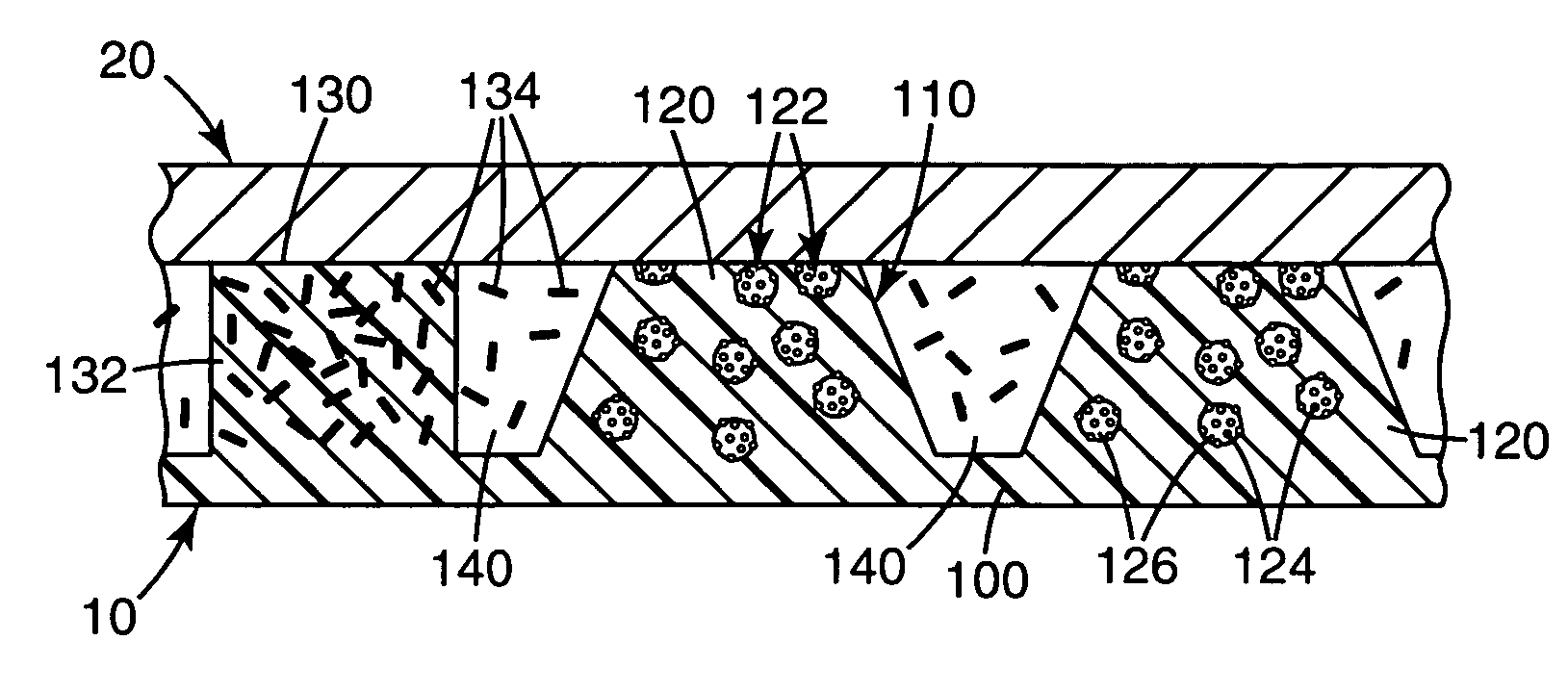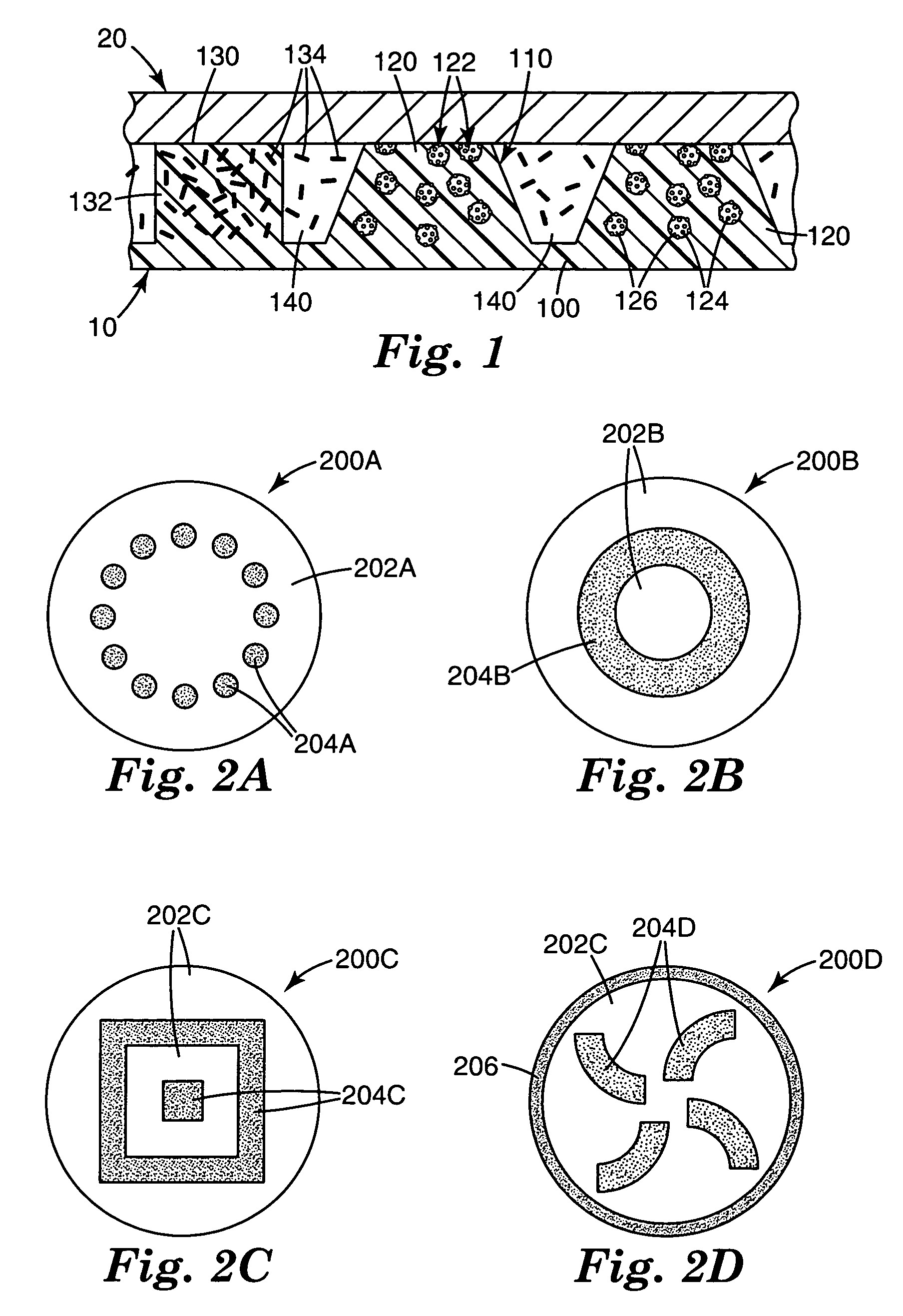Abrasive agglomerate polishing method
- Summary
- Abstract
- Description
- Claims
- Application Information
AI Technical Summary
Benefits of technology
Problems solved by technology
Method used
Image
Examples
example 1
[0060]A fixed abrasive article was prepared by inserting eight 5-cm diameter circular regions of planar conditioning amalgam segments prepared by Method III into a 30.5 cm (12 in.) disk of a fixed abrasive article prepared by Method I. The eight disks were evenly spaced around the perimeter approximately 3.8 cm (1.5 in.) from the edge.
example 2
[0061]A fixed abrasive article was prepared by inserting eight 5-cm diameter circular regions of textured conditioning amalgam segments prepared by Method II into a 30.5 cm (12 in.) disk of a fixed abrasive article prepared by Method I. The eight disks were spaced as in Example 1.
example 3
[0062]A fixed abrasive article was prepared by cutting a 30.5 cm (12 in.) disk from a sheet having alternating stripes of the fixed abrasive article prepared by Method I and the textured conditioning amalgam segment prepared by Method II. The stripes of fixed abrasive article were 5 cm (2 in.) wide and the stripes of textured conditioning amalgam were 2.54 cm (1 in.) wide.
PUM
| Property | Measurement | Unit |
|---|---|---|
| particle size | aaaaa | aaaaa |
| particle size | aaaaa | aaaaa |
| particle size | aaaaa | aaaaa |
Abstract
Description
Claims
Application Information
 Login to View More
Login to View More - R&D
- Intellectual Property
- Life Sciences
- Materials
- Tech Scout
- Unparalleled Data Quality
- Higher Quality Content
- 60% Fewer Hallucinations
Browse by: Latest US Patents, China's latest patents, Technical Efficacy Thesaurus, Application Domain, Technology Topic, Popular Technical Reports.
© 2025 PatSnap. All rights reserved.Legal|Privacy policy|Modern Slavery Act Transparency Statement|Sitemap|About US| Contact US: help@patsnap.com


